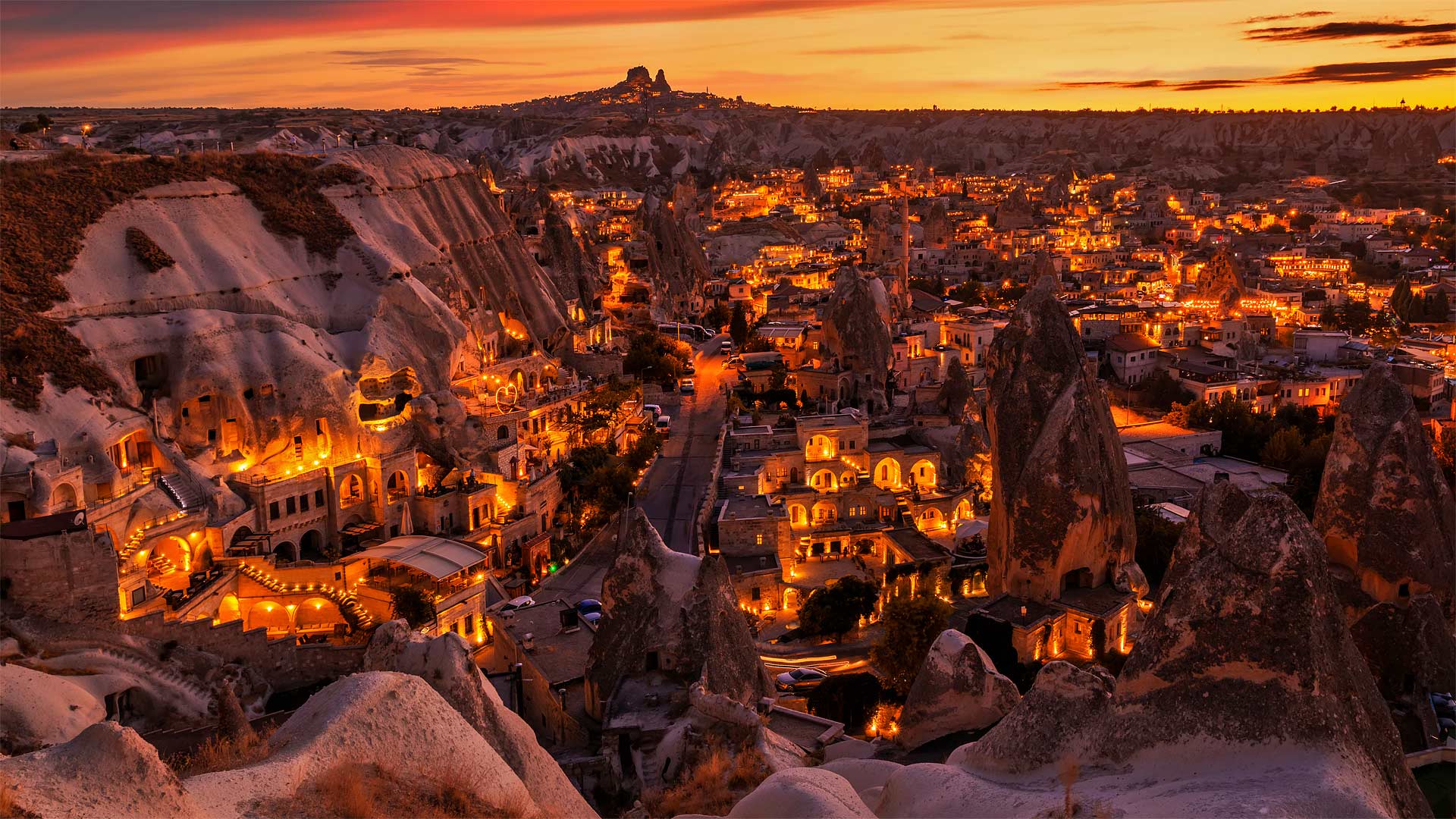从观景台俯瞰格雷梅,格雷梅国家公园,土耳其卡帕多西亚省 View of Göreme from an observation deck, Göreme National Park, Cappadocia, Turkey (© Anton Petrus/Getty Images)

从观景台俯瞰格雷梅,格雷梅国家公园,土耳其卡帕多西亚省 View of Göreme from an observation deck, Göreme National Park, Cappadocia, Turkey (© Anton Petrus/Getty Images)
那些生动的岩石 Living rock
Göreme, in Cappadocia, Turkey
Both natural wonders and historic landmarks, the 'fairy chimneys' of Göreme may suggest the fantastical dwellings of an alien species or an illustration from a Dr. Seuss book. These and similar rock formations are known by many names—hoodoos, tent rocks, earth pyramids, as well as fairy chimneys—and are typically found in dry, hot areas. Here in Cappadocia, in south-central Turkey, they were formed when a thick layer of volcanic ash solidified over millions of years into soft, porous rock called tuff that was overlaid by hard basalt. Cracks in the basalt allowed wind and rain to gradually wash away the softer bottom layer, leaving the hard basalt to cap tall columns of the tuff. The result is these unusual, often beautiful—and perhaps puzzling—formations that spread across the Anatolian plain.
This part of modern day Turkey has been inhabited since at least the Hittite era, between 1800 and 1200 BCE, and possibly for much longer. Innumerable ancient empires fought over the region, with Hittites, Assyrians, Neo-Assyrians, Persians, Greeks, and Romans each laying claim to Anatolia at times. To escape this dangerous world, the locals learned to burrow into the hillsides for protection. Today, a visitor can see the vast, complex, interconnected caves in which societies thrived and sheltered for millennia. Göreme National Park was added to the UNESCO World Heritage List in 1985 and is now a popular tourist destination.
格勒梅,土耳其卡帕多西亚
无论是自然奇观还是历史地标,戈雷米的“童话烟囱”都可能暗示着一个外来物种的奇幻住所,或是苏斯博士书中的插图。这些和类似的岩层以许多名字而闻名于世,如树丛、帐篷岩、地球金字塔,以及仙女烟囱,通常出现在干燥炎热的地区。在土耳其中南部的卡帕多西亚,一层厚厚的火山灰经过数百万年的固化,形成了一种叫做凝灰岩的软多孔岩石,上面覆盖着坚硬的玄武岩。玄武岩中的裂缝使风和雨逐渐冲走较软的底层,留下坚硬的玄武岩覆盖凝灰岩的高柱。结果就是这些不寻常的、通常美丽的、也许令人费解的地层遍布安纳托利亚平原。
现代土耳其的这一部分至少从赫梯时代(公元前1800年至1200年)起就有人居住,而且可能会更久。无数的古代帝国为该地区而战,赫梯人、亚述人、新亚述人、波斯人、希腊人和罗马人有时都声称对安纳托利亚拥有主权。为了逃离这个危险的世界,当地人学会了在山坡上挖洞保护自己。今天,游客可以看到巨大、复杂、相互连接的洞穴,数千年来,社会在这些洞穴中繁衍生息并得到庇护。戈雷米国家公园于1985年被联合国教科文组织列入世界遗产名录,现在是一个受欢迎的旅游目的地。
评论已关闭